#Duchess of Valentinois
Explore tagged Tumblr posts
Link
(In Spanish, secret lives of a couple...)
After the TITLE’s extinction in 1949, according to French Law.

0 notes
Text


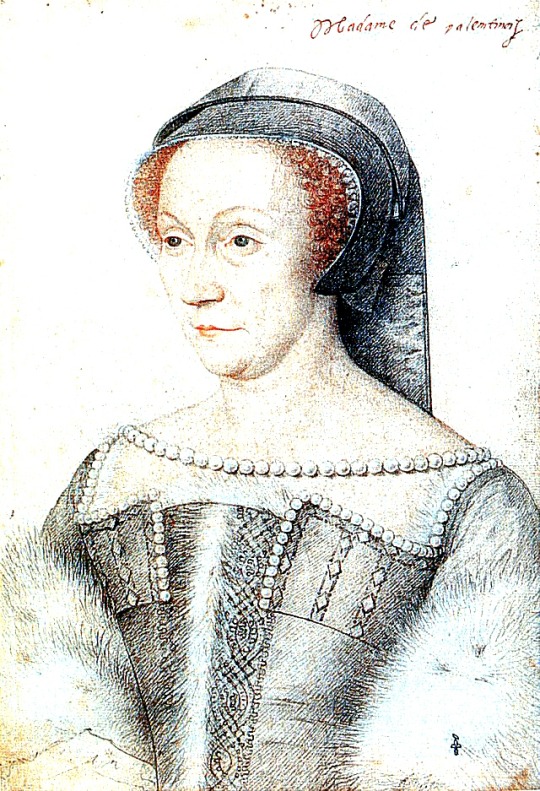

Anne de Pisseleu & Diane de Poitiers
The rivalry, and mutual animosity, which took place between the two royal favourites and their parties, embittered and disgraced the last years of Francis I‘s reign. Anne de Pisseleu, the King's mistress, sympathized with protestant doctrines and Diane de Poitiers, Dauphin Henry's mistress, was an ardent Catholic. The rivalry between Diane and Anne not only attests to their great influence at court but also reveals in dramatic fashion the ways mistresses could complicate political issues and family relations. Anne’s pronounced influence with Francis led Henry increasingly to turn against his father and to oppose his policies. Father and son were frequently and more sharply at odds during the last ten years of Francis’s reign.
The court, divided into two hostile camps, became a hotbed of intrigue, with Diane and Anne engaged in a war of calumnies and slanderous epigrams. To discredit her emerging rival, Anne launched a campaign of personal invective against Diane de Poitiers in which she emphasized her rival’s age, claiming inaccurately that Anne was born the day Diane wed. Anne was only nine years younger than Diane. Anne disparaged Diane’s looks and commissioned the poet Jean Voulté, whose verses described Diane: “her face painted with wrinkles, her false teeth, and her ruined complexion.” In retaliation, Diane attacked Anne de Pisseleu’s fidelity because it was widely known that she and Francis I had lived in an open relationship. Anne took lovers, well over a dozen, according to Diane. Henry not only vociferously defended his mistress but also became her agent in the campaign against Anne, spreading the rumor that Anne had slept with her brother-in-law Guy Chabot, the chevalier of Jarnac.
Francis I’s death laid Anne de Pisseleu open to the machinations of her enemies. She was so unpopular that the imperial ambassador Saint-Mauris believed she would have been stoned to death if she appeared in the streets of Paris alone. She was evicted from her luxurious royal apartments in a matter of days after the old King’s death, forced to return the jewels she received from Francis and despoiled of part of her lands. These were now given to Diane de Poitiers, who received the title of Duchess of Valentinois and became the most important woman at court after the new Queen, prompting a cry: “The King is dead, long live the new mistress” in recognition of Diane displacing Anne de Pisseleu in the office of the titular royal mistress. Anne was allowed to retire in obscurity to one of her châteaux, where she spent her last years in contemplation and occasional acts of charity.
Sources:
Sylvia Barbara Soberton, Golden Age Ladies: Women Who Shaped the Courts of Henry VIII and Francis I
Kathleen Wellman, Queens and Mistresses of Renaissance France
#women in history#diane de poitiers#anne de pisseleu#francis i of france#henry ii of france#french history
23 notes
·
View notes
Text
Infodump:
I have a never ending fascination with official royal mistresses of French kings.
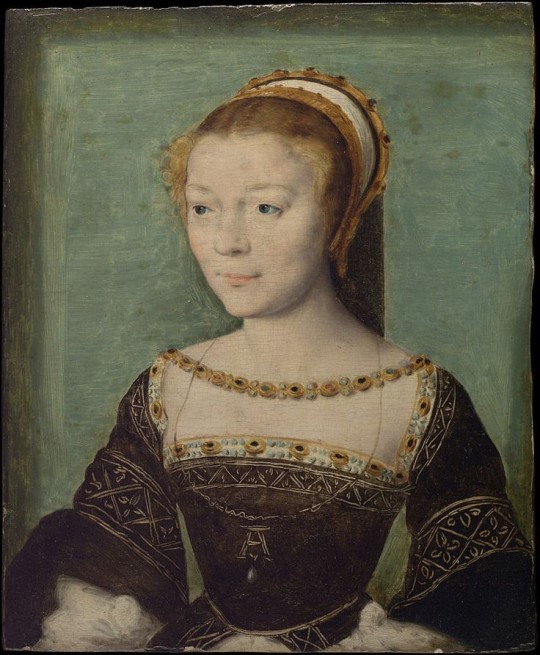
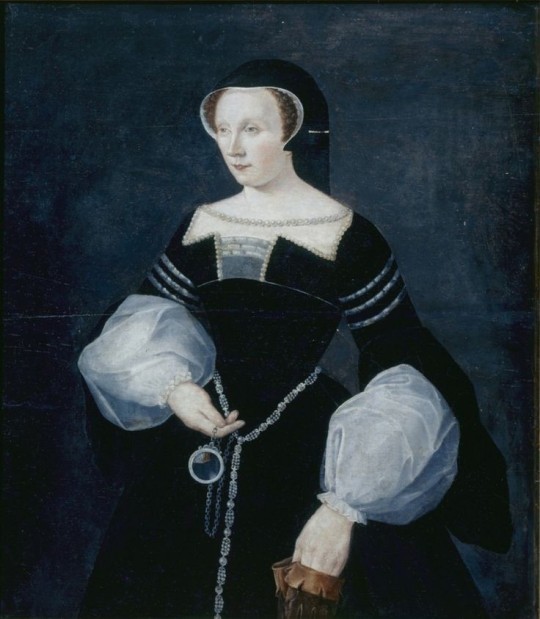


Anne de Pisseleu d'Heilly, duchess of Étampes
Diane de Poitiers, duchess of Valentinois
Jeanne-Antoinette Poisson, marquise de Pompadour
Marie-Jeanne Bécu, comtesse du Barry
#infodump#special interests#history geek#women's history#royal mistresses#french history#royal women#maîtresse-en-titre#european history#historical accuracy
14 notes
·
View notes
Text
as if lucrezia and i both having april birthdays and cesare and my mom sharing a birthday wasn't enough, just found out that diane de poitiers was named duchess of valentinois (aka the feminine version of the title bestowed upon cesare borgia by king louis xii) by king henry ii & i had an obsession with reign for YEARS so yeah i guess what i'm trying to say is that like all my other obsessions (btw diane's death date is my birthday so there's another tie to me!!), my obsession with the borgias was written in the stars lol
11 notes
·
View notes
Text

The Princely Family of Monaco attends the burial of Princess Charlotte of Monaco in Paris, France, on November 22, 1977.
PARIS, Nov. 17 (UP!)—Princess Charlotte of Monaco, the mother of Prince Rainier, died late yesterday at her home here after a long illness, the royal family of Monaco announced today. She was 79 years old.
A palace statement said, “Their Royal Highnesses Prince Rainier III and Princess Grace regret to announce the death of Princess Charlotte, mother of Prince Rainier and of Princess Antoinette, Private funeral services will be held later at the Chateau of Marchais,” in the Aisne region in southern France.
Princess Charlotte Louise Juliette, Duchess of Valentinois, was horn Sept. 30, 1898, in Monaco, She married Count Pierre de Polignac on March 19, 1920. Her husband, who was Hench, then took the title of Prince Pierre de Monaco. He died in 1964.
11 notes
·
View notes
Text
On 29 January 1393, a masked ball, which later became known as the Bal des Ardents ("Ball of the Burning Men"), was organized by Isabeau of Bavaria to celebrate the wedding of one of her ladies-in-waiting at the Hôtel Saint-Pol. At the suggestion of Huguet de Guisay, the king and four other lords[15] dressed up as wild men and performed a dance while dressed "in costumes of linen cloth sewn onto their bodies and soaked in resinous wax or pitch to hold a covering of frazzled hemp, so that they appeared shaggy & hairy from head to foot."[16]
At the suggestion of one Yvain de Foix, the king commanded that the torch-bearers were to stand at the side of the room. Nonetheless, the king's younger brother Louis I, Duke of Orléans, who had arrived late, approached with a lighted torch to discover the identity of the dancers, and accidentally set one of them on fire. There was panic as the flames spread. The Duchess of Berry threw the train of her gown over the king to protect him.[17] Several knights who tried to put out the flames were severely burned. Four of the dancers perished: Charles de Poitiers, son of the Count of Valentinois; Huguet de Guisay; Yvain de Foix; and the Count of Joigny. Another – Jean, son of the Lord of Nantouillet – saved himself by jumping into a dishwater tub.[18]
After the company emerged from the forest at noon, a page who was drowsy from the sun dropped the king's lance, which clanged loudly against a steel helmet carried by another page. Charles shuddered, drew his sword and yelled, "Forward against the traitors! They wish to deliver me to the enemy!" The king then drew his sword, spurred his mount, and attacked his own knights before one of his chamberlains and a group of soldiers were able to grab him from his mount and lay him on the ground. He lay still and did not react, but then fell into a coma; as a temporary measure, he was taken to the castle of Creil,[8] where it was hoped that good air and pleasant surroundings might bring him to his senses. The king had killed a knight known as "The Bastard of Polignac" and several other men during the attack.[9]
72 notes
·
View notes
Text

Louis II, Prince of Monaco with his only daughter Princess Charlotte, Duchess of Valentinois in 1898.
#monaco#princess charlotte of monaco#duchess charlotte of valentinois#1898#1890s#louis ii prince of monaco
23 notes
·
View notes
Text

The Princely Family of Monaco attends the burial of Princess Charlotte of Monaco in Paris, France, on November 22, 1977.
PARIS, Nov. 17 (UP!)—Princess Charlotte of Monaco, the mother of Prince Rainier, died late yesterday at her home here after a long illness, the royal family of Monaco announced today. She was 79 years old.
A palace statement said, “Their Royal Highnesses Prince Rainier III and Princess Grace regret to announce the death of Princess Charlotte, mother of Prince Rainier and of Princess Antoinette, Private funeral services will be held later at the Chateau of Marchais,” in the Aisne region in southern France.
Princess Charlotte Louise Juliette, Duchess of Valentinois, was horn Sept. 30, 1898, in Monaco, She married Count Pierre de Polignac on March 19, 1920. Her husband, who was Hench, then took the title of Prince Pierre de Monaco. He died in 1964.
11 notes
·
View notes
Photo

1690-1699 Antoine Trouvain - Madame la Duchesse de Valentinois in ball dress
(New York Public Library)
92 notes
·
View notes
Note
I was wondering what you knew about Cesare's only legitimate child, Louise Borgia? I'm so curious about her life and her relationships with the people around her, but there's not really much i could find, which is strange considering she was the heir of both her father and mother, and lived till a decent age? Is there anything more we know of her and her life?
Hm, probably the same as you, anon. Sadly there isn’t much information available about her. I think you may already checked out Miron’s work about Charlotte, which brings some information about Louise, so I checked out Sacerdote’s bio to see if I could find anything “new”, but I think he mainly just used Miron’s work. In any case, I’ll add here what I could gather:
Louise kept up a continuous correspondance with her aunt, Lucrezia ,although as far as I know these letters were never published, which it’s a shame, it would be interesting to read them. After her mother died (1514), she was placed under the guardianship of Louise of Savoie, Francis I’s mother. It seems there was conflict between them, in regards to Louise’s assets and the terms in the guardianship etc, but also maybe a clash of personalities.
That made Louise appeal to her grandfather, Albret d’Albret, and then interestingly enough to Isabella d’Este, you probably already read this letter, but just in case, I’m posting it here:
"Madame, with all respect I commend myself to your good grace. Madame, that which I desire above all else in the world is to hear how my good relations and friends are and prosper, and to be advised of you and of Madame the Duchess, my aunt. I have given charge to and sent the bearer of this letter to see you, and to advise me of your news. I beg of you, Madame, to send me news of you by him in full. And if it pleases you to hear of mine, he will inform you amply. Madame, I have also charged him to tell you something else from me. I beg of you to believe it, and to be good enough to help in the matter of which he will speak to you. And in doing so you will make my gratitude always yours. Praying Our Lord to give you a very good and long life. Written at Auxonne this ninth day of July, 15. "Your very humble niece and good friend, Louise de Valentinois." It's interesting that Louise felt she could write to Isabella d'Este, even though the marriage alliance between her and their son, Federico, failed to succedded. It's pretty clear, by the tone of the letter, that some political intrigue was going on, whether it was Louise wanting to know more about her father's inheritance in Italy, or gauging the possibility of the above mentioned marriage alliance her father tried to make with the Gonzaga, perhaps with her aunt Lucrezia helping her with it, as well, given her close relations with the Marquis of Mantua, Isabella's husband. It's possible she was searching for other options, and if that is so, then it implies she wasn't very willing to marry Trémoille. Personally, I find his interest in her a little strange, maybe Louise felt it, too, who knows. Sacerdote says the followingabout this letter:
The letter has no date; but it was certainly written after 1514 - the year of Charlotte d’Albret's death - and before 1517, the year of Louise' marriage. As for the "matter", in which she wanted to interest Isabella d 'Este, it is very likely that it was her inheritance, left to her by her father in Italy. It is known, in fact, that Cesare Borgia had a very high sum on deposit with Genoese, Venetian and Florentine bankers; and before fleeing to Naples he had entrusted to his friend, Cardinal Vera, all his gold and silverware and carpets and other things of value, so that, if he came to die, they were to be sent to his wife. [...] As for the other "affair", her engagement with Federico Gonzaga, son of Isabella, had definitely ended. It begun as early as December 1501, the negotiations for this engagement were then conducted with fervor on both sides. Despite the great aversion that Isabella d'Este and her husband Francesco Gonzaga felt for the Borgias, they nevertheless knew that such a relationship would have a high political value for their house and for their state.
In 1516, Federico Gonzaga was sent to Paris, and he and Louise saw each other, and at the time there was talk about finally making the marriage alliance between the two Houses happen, but for reasons unknown, it failed again. There was also talk of a marriage between Louise and the Medici, with Piero de Medici’s son, Lorenzo de’ Medici.
It seems the prejudice against the Borgia family, esp. against Cesare, ended up touching Louise as well. There was some effort to ignore, or to "look past" Louise' bloodline on her father's side. For example, when Louis II de la Trémoille, her first husband, was asked as to why he chosed the daughter of Cesare Borgia (such a wicked man to their eyes) as a wife? To placed her on the same bed as his former wife, Gabrielle de Bourbon Montpensier? He allegedly is recorded as having answered: “La mia scelta cadde su madamigella de Valentinois, perché ella discende da una razza, la virtù delle cui donne non fu mai posta in questione. /My choice has fallen upon Mademoiselle de Valentinois because she springs from a race whose women's virtue has never been called in question."
As Sacerdote (and Miron) point out, he clearly wasn't talking about the Borgia women, so he was implying that as far as he was concerned, Louise was entirely from d'Albret and their lineage's bloodline, and as such he knew Louise had inheritated the virtues known in her mother and the women’s side of that family, which was why he chose her as his bride.
Louis died in battle, at Pavia in 1525, and Louise re-married Philippe de Bourbon in February 3, 1530. I couldn’t find anything about her relationship with her second husband, which it’s a shame, because that’s something I would like to know more about myself. They have six children:
Claude de Bourbon, Count of Busset, of Puyagut, and of Chalus.
Marguerite de Bourbon
Henri de Bourbon
Catherine de Bourbon
Jean de Bourbon, Seigneur of La Motte-Feuilly and de Montet.
Jerome de Bourbon, Seigneur de Montet.
And iirc by this bloodline, there are still many living descendants today of Cesare and Charlotte.
Louise was a member of the Third Order of Saint Dominic.
She always signed herself as Duchesse de Valentinois, comtesse di Diois, and in a document dated June 18, 1535. It seems she was party to a transaction between her and her cousin, Henri de Navarre, touching the “droits de légitime” (portion that a child has by law in his father’s estate) of her mother, Charlotte d’Albret.
And that’s about all I could gathered, anon, the other Borgia bios I have checked either don’t have anything or they just repeat what was established by Miron and Sacerdote and some French authors. Sorry if it wasn’t too helpful, I really wish we knew more. Again, I'd love to see the letters between Lucrezia and Louise published. I think it would give us more information about her, but as far as I know it hasn’t been.
#anon ask#ask answered#louise borgia#house borgia#me while writing this: aaah to marry a man who carries cesare's bloodline (the amazing borgia genes !!!!!!!!!!!!!)#if i can't have the actual man; can i at least have a descendant of him pretty pls?? i'd be happy with that#i think i deserve it ok#i'd def. have children then#*sighs*
9 notes
·
View notes
Text
snippet
thank you @runaway-train-works @evilovesyou @twopoppies @reminiscingintherain @lululawrence @homosociallyyours @harrystinyshorts @hershelsue @maggieisalarrie @haztobegood @cyantific and @harryanthus for tagging me to share a snippet (or line) from my WIP! I’m in a very logistics-heavy part of the chapter that I’m working on in my Grace Kelly AU and I’m having a lot of fun with it <3
“All right, Liam. What’s next on the agenda?”
“Titles,” Liam announces, looking up from his papers. “First, obviously, prince consort. But there are several more–”
“Prince consort? That sounds like royal bedfellow or something.”
Louis snorts at Harry’s words, covering his hand with his mouth.
“It’s commonly used in many royal families,” Liam explains smoothly, making Harry wonder what it would take to ruffle him. “It simply differentiates the sovereign prince from their spouse. Your roles are unique. Shall I continue?”
“Yes, please,” Harry says quietly, properly chagrined.
“After the wedding, you will be known as His Serene Highness, Prince Harold of Monaco–”
Nick bursts into laughter, which makes Harry start giggling and even Louis chuckles.
“Is there an issue, gentlemen?” Liam asks, setting down his pen and clasping his hands.
“It’s just Harry,” Nick explains, gesturing toward Harry next to him.
“I seem to have missed something, did he make a joke?” Liam furrows his thick eyebrows, looking to Louis for an explanation.
“His name is Harry,” Louis says, gesturing across the table. “Not Harold.”
“Oh,” Liam says, looking back to his notes. “Really? On your birth certificate and everything?”
Harry nods.
“Well, that’s too bad,” Liam murmurs, crossing something out on his notepad. “Harry doesn’t have the same ring to it, does it?”
“I mean, I like it,” Harry says, shrugging. “I think my parents liked it when they chose it, but whatever.”
“My apologies,” Liam says, giving Harry a genuine smile. “I spoke out of turn. As I was saying, you will be known as His Serene Highness, Prince Harry of Monaco. Now, knowing that Louis’ future spouse would be a man, our team started looking into the legalities concerning the remaining titles a few years ago. I’ll let Hervé explain.”
“Thank you, Liam.” One of the black suit-clad men sitting to Liam’s right gives a small wave and Harry turns his attention to him. “We went through several options, and after consulting the Council and Minister of State, the one we propose is the simplest. With your royal title, using the consort designation signifies that you received the title by marrying a prince rather than being born a prince. So moving forward, technically, one of your titles would be Duke Consort of Valentinois, as opposed to Duke of Valentinois. Your Highness–” he nods down the table toward Louis “–is the Duke. And so on. You’ll be known as Count Consort of Polignac, Baron Consort of La Luthumiere. This is common when a titled woman marries, for example the Duchess of Alba in Spain. She inherited the duchy, and then each of her husbands were dukes consort and referred to as such in order to avoid confusion as to who inherited the title. Is that amenable to all parties?”
Despite the relatively simple explanation, most of what Hervé says goes over Harry’s head a bit. He hasn’t given any thought to nobility titles at all, let alone in relation to him. Whatever solution is good enough for the government of Monaco is good enough for him, too, so he nods, glancing at Louis.
“I think that’s acceptable,” Louis says, looking back at Harry. “What titles would Harry retain the event of a divorce?”
“None of them,” Hervé says simply. “That is quite standard in these circumstances, unlike when your mother and father divorced.”
“That makes me uncomfortable,” Louis says, shaking his head. “I don’t like it, although I suspect Harry doesn’t care about the titles. If none of the honorary ones– which, I’m sorry, how many are there?”
“That would be,” Hervé checks his notes, “one hundred and twenty-seven, Your Highness.”
Nick gives a low whistle as Harry widens his eyes. One hundred and twenty-seven honorary titles. Fuck.
“Then we should put in writing that he would continue to be styled as Prince Harry of Monaco. Along with the HSH.”
“Your Highness,” Hervé starts, setting down his pen. “I’m not sure–”
“In writing,” Louis repeats, his tone brooking no arguments. “Non-negotiable. I’m not concerned that it will come to fruition, but I want to make sure Harry is taken care of, no matter what happens in the future.”
The room falls into an uneasy silence as everyone on Louis’ side of the table busies themselves writing notes. Harry tries to subtly adjust himself under the table, Louis’ authoritarian voice having predictably affected him, while Louis checks his phone as if nothing happened.
I tag you all back, adding @beau-soleil-louis @jacaranda-bloom @kingsofeverything
41 notes
·
View notes
Photo
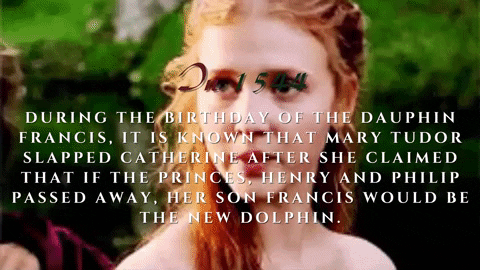




The Queen and Duchess French (3/?)
In 1544 a rumor was created that the Dauphine of France had an unfortunate encounter with the Duchess of Orleans on the birthday of the Dauphin Francis III of Brittany. Mary is said to have slapped Catherine on hearing her say "Long live the dolphin and her heirs, even if that means that my blood will never bear the crown of France" & this angered the mother of the children as she took it as a threat of death.
A year later Catherine gave birth to her first daughter, Elisabeth who would be Queen consort of England, but her birth did not cause anything in the Duchess who was expecting a second son and she refused to carry her. Princess Mary on the other hand took little Elisabeth in her arms and declared that she was a very beautiful baby with big dark eyes. The following year, Princess Sophie was born, the last daughter of the French dolphins and who would be Princess consort of Transylvania, in addition to being known for her supposed mental problems.
On January 28, 1547, the King of England, Henry VIII, passed away and Mary traveled to her native country to be present at the funeral of her father, in addition to attending the coronation of her brother, Edward VI. While this was happening, Catherine de Medici continued to manage her domains in Valentinois and became involved in palatial schemes, creating rumors about her husband's mistresses including Diane de Poitiers & Filippa Duci who was the mother of Diane of France. The Duchess also made some negotiations with the Principality of Monaco when she wanted to engage her daughter, Elisabeth with Honoré I, but this ended the engagement because she refused to repudiate his wife, Isabela Grimaldi. To avoid the anger of King Francis I who had a good relationship with Catherine, Honoré gave the Duchess a series of vineyards in Monaco that were not in good condition, but Catherine still accepted them.
These negotiations and the ownership of these lands earned Catherine the nickname of the "Black Duchess", but she also gave her the reputation of being a landowner. Medici put the vineyards to work, achieving a great extraction of wine and herbs, raising the economy of the Duchy of Orleans and gaining the appreciation of his vassals, reaching a series of followers and favorites who were generally of Italian origin.
En 1544 se creo el rumor de que la delfina de Francia tuvo un encuentro desafortunado con la duquesa de Orleans durante el cumpleaños del delfín Francisco III de Bretaña. Según se dice María acacheteo a Catalina al escucharla decir “Larga vida al delfín y a sus herederos, aun que eso signifique que mi sangre jamás llevara la corona de Francia” & esto enfureció a la madre de los pequeños ya que se lo tomo como una amenaza de muerte.
Un año después Catalina dio a luz a su primera hija, Isabel que seria Reina consorte de Inglaterra, pero su nacimiento no provoco nada en la duquesa que esperaba un segundo varón y se negó a cargarla. La princesa María por otro lado tomo en brazos a la pequeña Isabel y declaro que era una bebé muy hermosa de ojos grandes y oscuros. Al año siguiente nació la princesa Sofía la ultima hija de los delfines franceses y que sería Princesa consorte de Transilvania, además de ser conocida por sus supuestos problemas mentales.
El 28 de enero de 1547 falleció el rey de Inglaterra, Enrique VIII y María viajo a su país natal para estar presente en el funeral de su padre, además de asistir a la coronación de su hermano, Eduardo VI. Mientras esto ocurría, Catalina de Medici siguió administrando sus dominios en Valentinois y se involucro en las tramas palaciegas, creando rumores sobre las amantes de su marido entre ellas Diana de Poitiers & Filippa Duci que era la madre de Diana de Francia.
La duquesa también hizo algunas negociaciones con el Principado de Mónaco al querer comprometer a su hija, Isabel con Honorato I, pero este termino con el compromiso debido a que se negó a repudiar a su esposa, Isabela Grimaldi. Para evitar el enfado del rey Francisco I que tenia una buena relación con Catalina, Honorato le entrego a la duquesa una serie de viñedos en Mónaco que no tenían un buen estado, pero aun así Catalina los acepto.
Estas negociaciones y la propiedad de estos terrenos le valieron a Catalina el apodo de la “Duquesa negra”, pero también le dio la fama de ser una terrateniente. Medici puso a trabajar los viñedos logrando una gran extracción de vino y hierbas, subiendo la economía del Ducado de Orleans y ganándose el aprecio de sus vasallos, llegando a tener una serie de seguidores y favoritos que por lo general eran de origen italiano.
#mary tudor#Catherine de Medici#Francis III of Brittany#Henry of Valois#francis i of france#henry viii of england
9 notes
·
View notes
Photo





Royal Birthdays for today, September 30th:
Anne of Burgundy, Duchess of Bedford, 1404
Elisabeth Eleonore of Brunswick-Wolfenbüttel, Duchess of Saxe-Meiningen, 1658
Augusta of Saxe-Weimar-Eisenach, German Empress, 1811
Charlotte of Monaco, Duchess of Valentinois, 1898
Marie-Esméralda of Belgium, Lady Moncada, 1956
#anne of burgundy#Augusta of Saxe-Weimar-Eisenach#charlotte of monaco#Marie-Esméralda of Belgium#Elisabeth Eleonore of Brunswick-Wolfenbüttel#long live the queue#royal birthdays
55 notes
·
View notes
Text
Charlotte d'Albret
Image: the-borgias.fandom.com
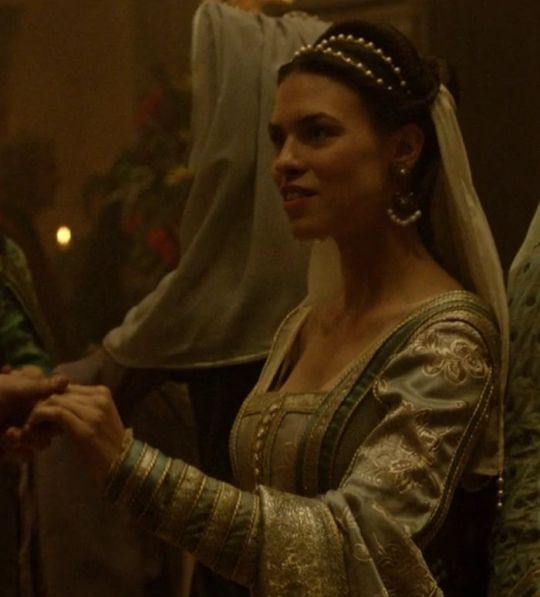
Charlotte d'Albret, Duchess of Valentinois and suo jure dame de Châlus (1480 – March 11, 1514), commonly known as Charlotte d'Albret, was a wealthy French noblewoman of the Albret line, sister of King John III of Navarre, and wife of the famed Cesare Borgia, whom she married in 1499. She was Cesare's sole legitimate daughter, Luisa Borgia, for whom she served as regent following his death.
Charlotte, the daughter of Alan the Great, Lord of Albret, and Francesca de Châtillon-Limoges, was born in 1480. Her paternal grandparents were Count Bertrand V of La Tour d'Auvergne and Boulogne and Isabelle de La Tour d'Auvergne, daughter of Count Bertrand V of La Tour d'Auvergne and Boulogne, and Jacquette du Peschin, and her maternal grandparents were William of Blois, Viscount of Limoges, and Isabelle de La Tour d'Auvergne, daughter of Count Bertrand V of Charles I of Albret, Constable of France, was her paternal great-great-grandfather, and he was killed in command of French troops during the Battle of Agincourt in 1415. He had six siblings, including John of Albret, who married Catherine de Foix and became King of Navarre.
Cesare Borgia's marriage
She married Cesare Borgia, the illegitimate son of Pope Alexander VI and Vannozza Cattanei, in Blois on May 10, 1499, when she was 19 years old. King Louis XII of France recently named him Duke of Valentinois. Cesare's alliance with France was strengthened by the marriage, which was arranged for political reasons. Caesar accompanied King Louis on his invasion of Italy shortly after the wedding.
"Beautiful and wealthy," Carlotta was described. She acquired the estates of Feusines, Néret, and La Motte-Feuilly in 1504.
Cesare and Carlota only had one kid together (despite the fact that Cesare had at least eleven illegitimate children from other mistresses):
Louise Borgia, suo jure lady of Châlus and duchess of Valentinois (May 17, 1500 - 1553), married Louis II de la Trémoille, governor of Burgundy, on April 7, 1517; she married a second time on February 3, 1530, to Philip of Bourbon, lord of Busset, with whom she had children.
César perished at the siege of Viana on March 12, 1507, in the service of Carlota's brother, the king of Navarre, with whom he had sought asylum after escaping from jail in Spain.
4 notes
·
View notes
Photo

HRH Princess Grace Cellario of Monaco, duchess of Valentinois
1 note
·
View note





